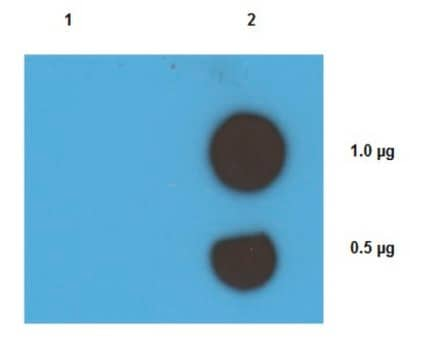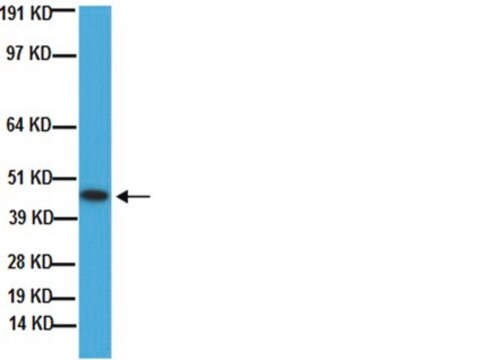AB5220
Anti-Growth Associated Protein-43 (GAP-43) Antibody
Chemicon®, from rabbit
Synonym(s):
Neuromodulin
About This Item
Recommended Products
biological source
rabbit
Quality Level
antibody form
purified antibody
antibody product type
primary antibodies
clone
polyclonal
species reactivity
mouse (high degree), rat, bovine, chicken, human
manufacturer/tradename
Chemicon®
technique(s)
ELISA: suitable
immunocytochemistry: suitable
immunohistochemistry: suitable
immunoprecipitation (IP): suitable
western blot: suitable
NCBI accession no.
UniProt accession no.
shipped in
dry ice
target post-translational modification
unmodified
Gene Information
human ... GAP43(2596)
General description
Specificity
Immunogen
Application
1:1,000 dilution of a previous lot was used on 4% paraformaldehyde / PBS fixed or 3% Paraformaldehyde / 0.1% Gluteraldehyde / PBS fixed tissue sections.
Immunocytochemistry:
1:1,000 dilution of a previous lot was used on Hippocampal neurons in culture and PC12 cells stimulated with NGF.
Immunoprecipitation:
1:100 dilution of a previous lot was used.
ELISA:
1:2,000 dilution of a previous lot was used.
Quality
Western Blot Analysis: 1:500 dilution of this lot detected Growth Associated Protein 43 on 10 μg of Mouse brain lysates.
Target description
Physical form
Storage and Stability
Avoid repeated freeze/thaw cycles. During shipment, small volumes of product will occasionally become entrapped in the seal of the product vial. For products with volumes of 200 µL or less, we recommend gently tapping the vial on a hard surface or briefly centrifuging the vial in a tabletop centrifuge to dislodge any liquid in the container’s cap.
Analysis Note
Rat dorsal root ganglion tissue that has been subjected to a spinal nerve ligation, cultured neurons.
Other Notes
Legal Information
Not finding the right product?
Try our Product Selector Tool.
recommended
Storage Class Code
10 - Combustible liquids
WGK
WGK 2
Certificates of Analysis (COA)
Search for Certificates of Analysis (COA) by entering the products Lot/Batch Number. Lot and Batch Numbers can be found on a product’s label following the words ‘Lot’ or ‘Batch’.
Already Own This Product?
Find documentation for the products that you have recently purchased in the Document Library.
Our team of scientists has experience in all areas of research including Life Science, Material Science, Chemical Synthesis, Chromatography, Analytical and many others.
Contact Technical Service






